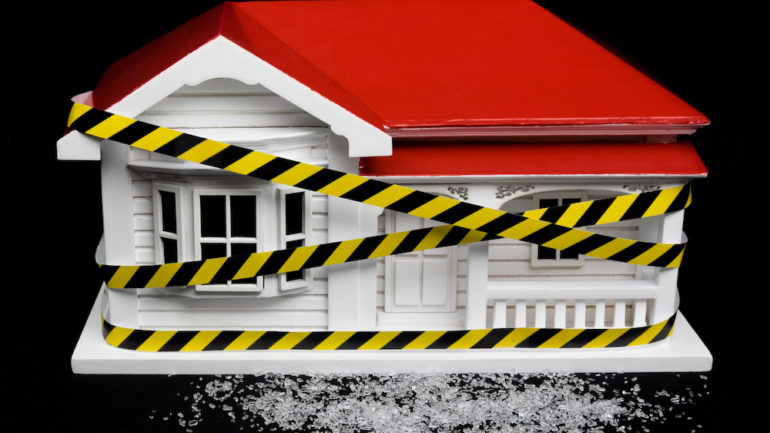People who would never use drugs can inadvertently purchase a home where methamphetamine was produced. Meth production leaves behind a toxic residue that can cause health problems for later residents of the house and developmental deficiencies in children. Here is how to avoid buying a meth-tainted home.
How to spot a meth house
Fumes from methamphetamine production or from heavy smoking by the drug’s users can saturate a house’s walls, ceilings and floors. It is dangerous to be in a house with meth residue. Here are telltale signs that a house has been used for producing meth.
- The house is unusually dirty. It doesn’t just need tidying up; it is trashed and filthy. Methamphetamine users don’t concern themselves with good housekeeping.
- The house smells like ammonia, vinegar and/or rotten eggs.
- Dead vegetation in the yard or flower beds can result from meth chemicals being dumped there.
If you suspect a home you are considering was once a meth house, you can obtain further information in several ways.
- Ask the neighbors: Who lived there previously? Do they suspect or know illicit activity went on there?
- If neighbors’ answers raise more suspicions, ask the police: Have officers investigated the house?
- You can order a meth test kit and check the house for residue.
- Finally, the federal Drug Enforcement Agency keeps a registry, called the National Clandestine Laboratory Registry, of known drug houses and commercial buildings. You can look up an address there.
Keep in mind that a house may not exhibit any signs of being a former meth lab. Meth houses have been found in nicer neighborhoods.
If you are suspicious of a property you’re considering, ask your real estate agent whether you live in one of the 27 states that require sellers to disclose whether a house was a former drug lab. Don’t be afraid to ask, as it’s too risky to sweep your concerns aside. Cleaning a building of meth exposure can cost tens of thousands of dollars.
Related – Is Sick House Syndrome Making You Ill?


